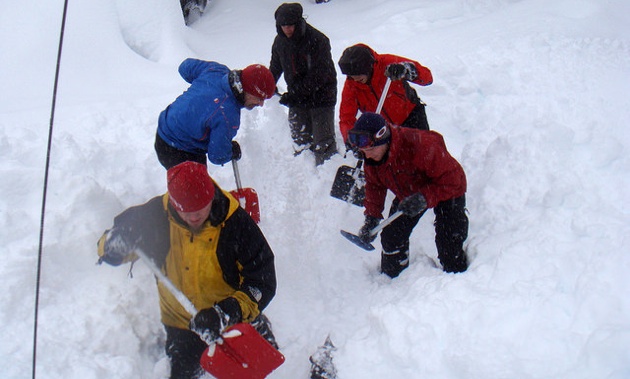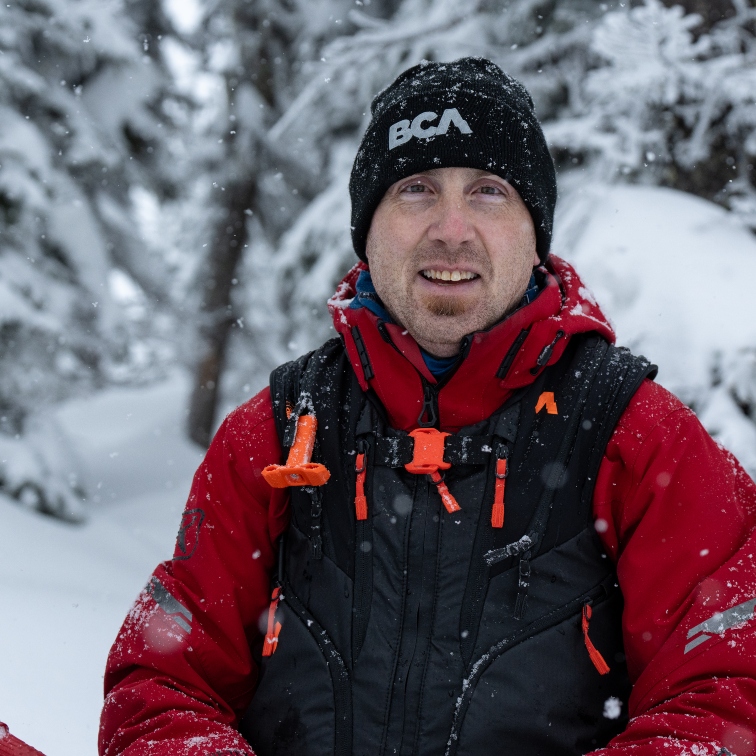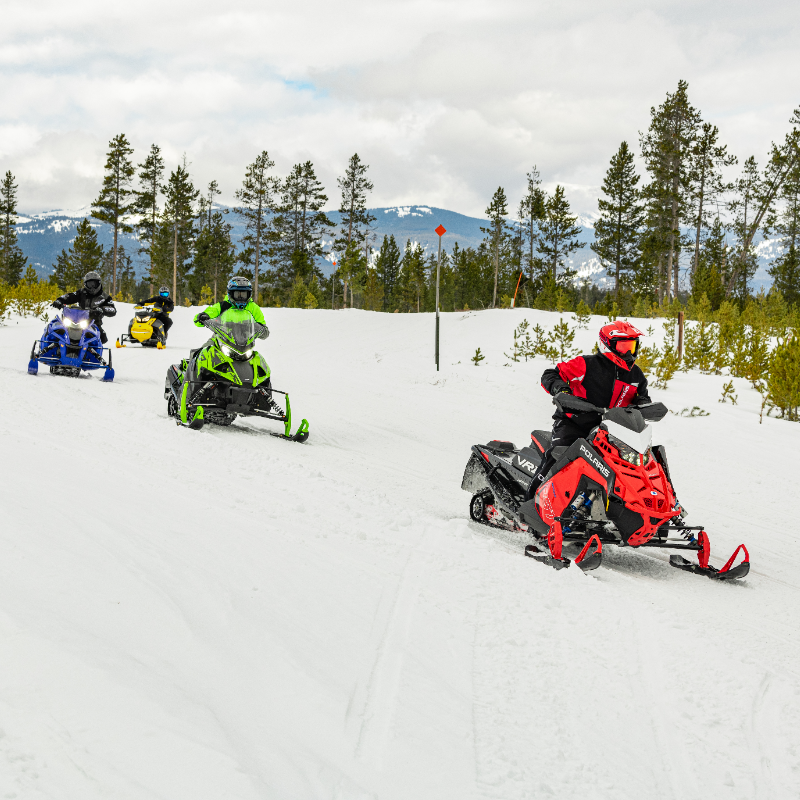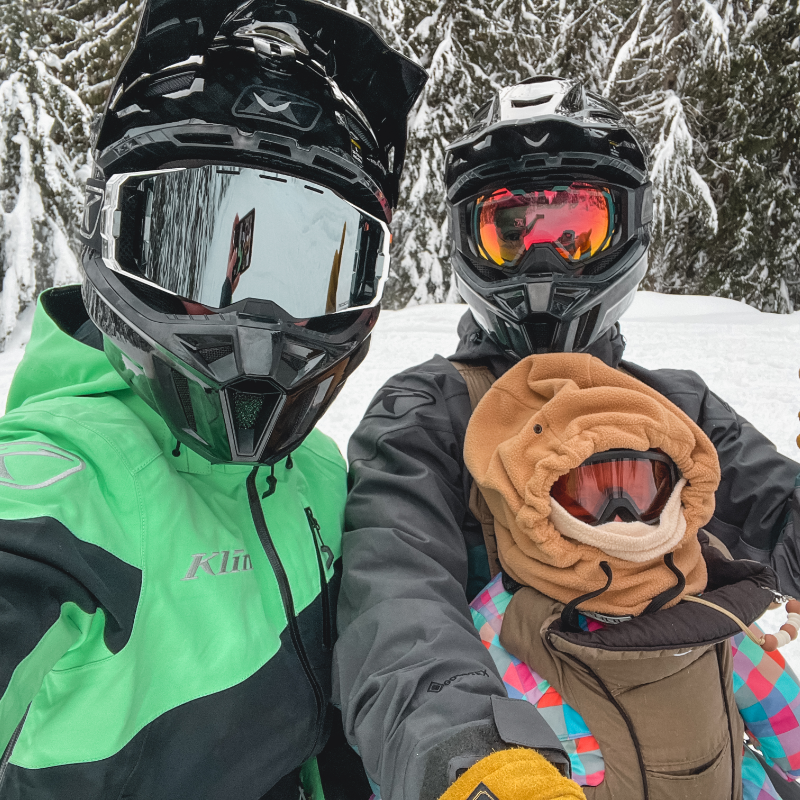Education, safety equipment, discernment and flexibility are all key components for survival in the backcountry. While avalanche skills training is a must, there are many other factors that can make or break your experience.
Most backcountry snowmobilers understand the necessity of safety equipment. The basics are a transceiver, shovel and probe. Simply owning the equipment is not enough, though. Even experienced riders need to practice regularly to keep their skills sharp.
Practice makes perfect
Arctic Cat pro rider and Rocky Mountain Snowmobile Hillclimb Association champion David McClure believes in education and preparedness and often spearheads spontaneous transceiver searches with his riding companions.
“Taking a course is simply not enough," said McClure. "Like any skill it needs to be practiced often to stay sharp. We have regular beacon search parties. Not only is it a good way to get together and discuss safety, (but also) it helps us to mentor new riders into the mindset of safety."
One day when his buddies were off playing in the trees, McClure buried his backpack and transceiver in tracked-up terrain.
“OK, guys, I am buried," McClure told his friends. "Find me!“
The group immediately sprang into action, searching then probing the terrain. It is regular practice such as this that keeps riders fresh and skilled.
Air bag facts
Another valuable safety tool is an avalanche air bag, which provides extra flotation to increase the odds of survival in the event a rider is buried in an avalanche. According to Brent Strand, snowmobile coordinator for Avalanche Canada, a growing trend is riders who allow wearing an avalanche air bag to give them a false sense of security.
“Many riders are exhausted by the amount of classes and courses they have to take for work purposes," said Strand. "The last thing they want to do is take a course for recreation."
However, simply believing you will pull a cord and survive is a deadly myth. Mental discipline and understanding are required when riding in the backcountry and prevention is key for survival.
Pow stoke
Being a mother, I've watched the movie Ice Age a few times. The character Scrat is an odd little creature who is constantly searching for an acorn. His obsession leaves him completely oblivious to his surroundings and the potential danger he puts himself in. His saga reminds me of snowmobilers infected by pow stoke.
Large dumps of snow can cause mountain riders to become intoxicated by thoughts of carving up fresh powder. The pow stoke phenomenon seems to rob them of their ability to think and make wise choices. Excitement and anticipation leave riders oblivious to terrain traps and signs of avalanche activity. This is especially true of visiting riders who travel to the mountains and relish every ounce of fresh snow. No matter what, be aware of your surroundings and avalanche conditions—even when beckoned by deep, dry powder.
Analyze your group
Goals and definite destination plans can also create potential danger.
“When riders form a ride plan, they must be flexible and adjust their route based upon snow conditions, terrain conditions, and rider capability," said Strand. "There must always be a plan B, or even C for that matter, to keep everyone safe.”
Understand the terrain, your group dynamics and the signs nature is providing to help your decision-making. Be willing to alter your route in the name of safety and common sene. You may not make it to the bowl or ride zone that has filled your dreams, because the terrain has become unstable or impassable.
Always ride to the capabilities of the weakest rider. Riding far out of an inexperienced rider's comfort zone could put everyone in the group at risk if they should become stuck or stranded. There are many dangers to consider, including injury from crashes, rollovers and stucks when riders simply do not have advanced skills.
Another deadly reality when taking inexperienced riders into complex terrain is the likelihood of triggering an avalanche when they get stuck on a slope and need help. Remember, what looks like a simple shortcut to you may look like a treacherous gauntlet to other riders.
Kodak courage
Kodak courage is the term for riders who put themselves in harm's way in an attempt to get photographs and video clips. They may choose to go bigger, climb higher, or drop further than their skill level and safety would allow, all in an attempt to impress.
That epic shot of your gnarly skills is not worth it if it results in a broken back—or an avalanche. If you are being filmed or photographed, keep your thinking cap on and ride as you normally would in the absence of paparazzi.
Ask yourself these questions:
- How would it feel to be buried alive in an avalanche? Watch the opening chapter of Throttle Decisions for a complete description from real-life avalanche survivors.
- Do you want to be responsible for digging out a friend or loved one from an avalanche? The pressure is on and every moment counts.
- Do you want to be the one to break the news to the family and loved ones that their son, daughter, father, mother or friend has died in an avalanche?
- Do you want to face an injury preventing you from not only never riding again, but perhaps even working or functioning in society? Spinal cord injuries are a reality when skill and caution are thrown to the wind in search of an adrenaline rush and momentary glory.
If you answered no to any of these questions and want to enjoy riding for a long time to come, ride educated and prepared and you'll live to ride another day.







